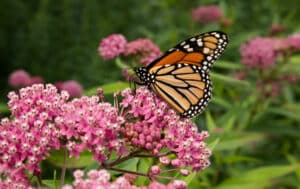
Rose Milkweed: Essential Native Plant for Monarch Butterflies
Rose milkweed is a beautiful native plant that can add color and life to your garden. This perennial flower, also known as Asclepias incarnata, grows
Shipping is temporarily suspended until Monday, July 7th to protect plant health. Click here to learn more.
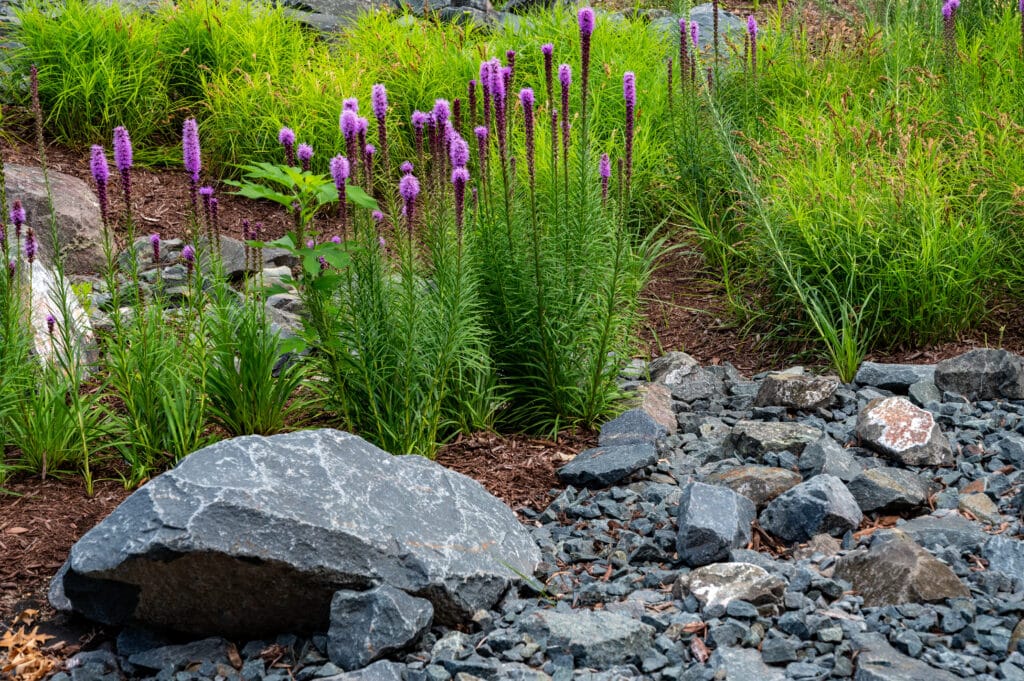
Blazing star plants bring striking beauty to gardens. These tall, slender flowers burst with color in late summer and fall.
Their purple, pink, or white blooms stand out against green foliage.
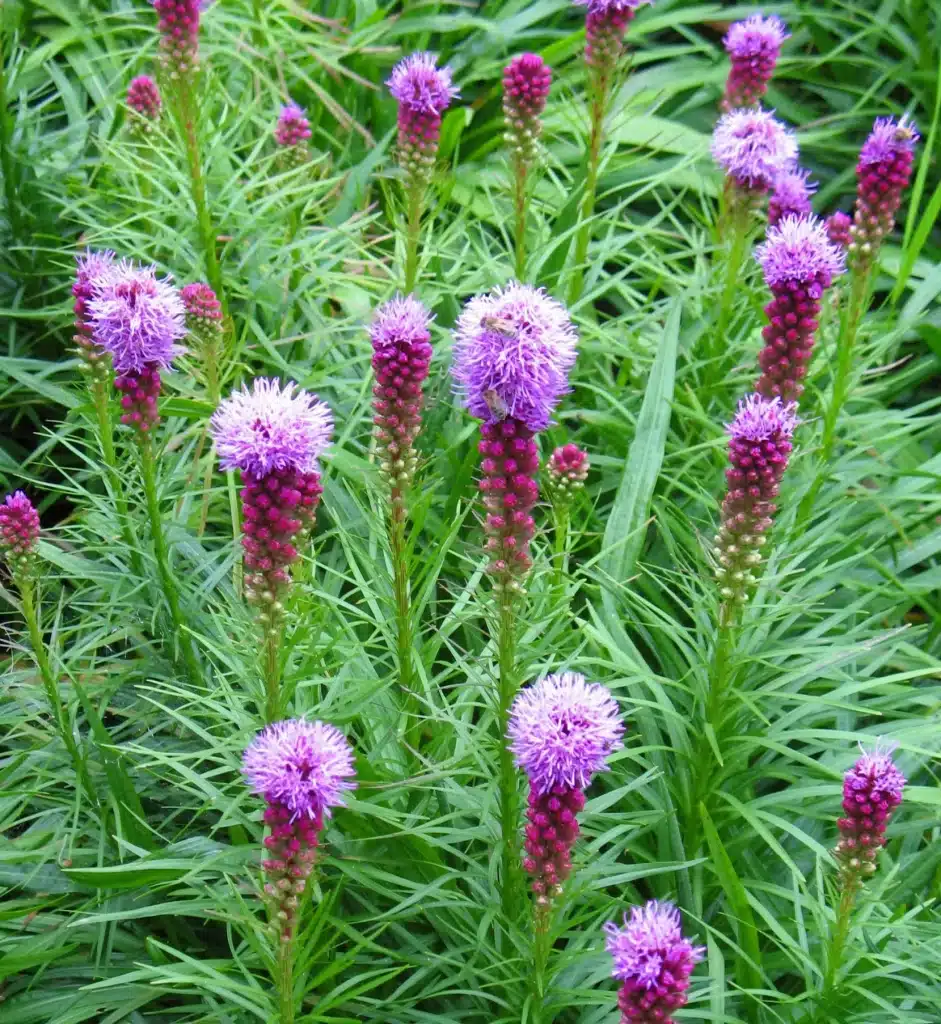
You can grow blazing stars easily in many climates. They thrive in full sun and well-drained soil.
These native wildflowers attract butterflies and bees to your yard.
Blazing stars make great cut flowers too. Their long-lasting blooms look gorgeous in vases.
With the right care, you’ll enjoy these eye-catching plants year after year in your garden.
Blazing star plants belong to the Liatris genus and have unique characteristics that set them apart. They thrive in specific habitats and come in various varieties and cultivars.
Blazing stars are part of the Liatris genus, which belongs to the Asteraceae family. This family includes other well-known plants like sunflowers and daisies.
Liatris plants are sometimes called gayfeathers due to their feathery flower spikes.
The Liatris genus has about 40 species. These plants are native to North America.
They’re known for their tall, upright growth and colorful blooms.
You’ll find blazing stars growing naturally in prairies, meadows, and open woodlands. They’re common in the eastern and central United States. Some species also grow in parts of Canada.
These plants prefer full sun and well-drained soil. They can handle poor soil conditions and drought once established.
This makes them great for low-maintenance gardens.
Blazing stars play a vital role in their native ecosystems. They provide food for pollinators like butterflies and bees.
Blazing stars are perennial wildflowers with grass-like leaves. Their most striking feature is the tall flower spike.
This spike can reach 1-5 feet in height, depending on the species.
The flowers bloom from top to bottom, which is unusual for spike-forming plants. Colors range from purple to pink, with some white varieties. Blooming typically occurs in late summer to early fall.
Blazing stars have a deep taproot system. This helps them survive in dry conditions. Their leaves are narrow and often dark green.
There are many blazing star species and cultivars to choose from. Some popular ones include:
Cultivars offer different colors and sizes. ‘Kobold’ is a compact variety good for small gardens. ‘Alba’ produces white flowers instead of the typical purple.
Some cultivars are bred for better disease resistance or longer bloom times. ‘Floristan White’ and ‘Floristan Violet’ are popular choices for cut flowers.

Blazing star plants thrive in specific conditions. You’ll need to provide the right environment for these beautiful flowers to flourish in your garden.
Blazing stars love full sun. Plant them in spots that get at least 6 hours of direct sunlight daily.
These flowers do best in open areas with good air circulation.
You can add them to cottage gardens or wildflower meadows. They also work well in borders or as standalone plants.
In shady spots, blazing stars may grow tall and weak. They might not produce as many flowers. If you have a partly shady garden, choose the sunniest spot for these plants.
Well-draining soil is crucial for blazing stars. They don’t like wet feet.
Sandy or loamy soil works best. If your soil is heavy clay, mix in organic matter to improve drainage.
Here’s a simple soil mix for potting blazing stars:
This mix provides good drainage and nutrients. You can also add a layer of gravel at the bottom of pots to help with drainage.
Blazing stars are drought tolerant once established. They have corms that store water, helping them survive dry spells.
Water young plants regularly for the first growing season. After that, they need less care.
During dry periods, water deeply once a week. In rainy seasons, you might not need to water at all.
Overwatering can lead to root rot, so let the soil dry between waterings.
Blazing stars can handle a range of temperatures. They grow well in USDA zones 3-9.
These plants can survive cold winters and hot summers.
In very hot climates, provide some afternoon shade. This helps protect the plants from extreme heat.
Blazing stars don’t need high humidity. They do fine in average home garden conditions.
In colder zones, add a layer of mulch around the plants in fall. This helps protect the corms from freezing temperatures.
Blazing star plants can be grown through several methods. These include using corms, starting from seeds, and dividing existing plants. Each technique has its own benefits and requirements for success.
You can grow blazing stars in different ways. Using corms is a common method. Corms are underground stem bases that store food for the plant.
You can also start blazing stars from seeds. This takes more time but gives you more plants. Dividing existing plants is another option. It’s a good way to get new plants that are exact copies of the parent.
Choose a sunny spot with well-drained soil for your blazing stars.
Plant corms or seeds in spring after the last frost. Space them 12-18 inches apart.
Water regularly but don’t overdo it. Blazing stars don’t like wet feet.
Corms are a quick way to grow blazing stars. Plant them 2-4 inches deep in spring. The pointy end should face up.
Water after planting and keep the soil moist but not soggy.
Corms will sprout in a few weeks. You’ll see green shoots coming up from the soil.
Once established, blazing stars from corms will bloom in their first year.
Growing from seeds takes more time but can be rewarding.
Sow seeds directly in the garden in fall or early spring. You can also start them indoors 6-8 weeks before the last frost.
Some blazing star seeds need cold treatment to sprout. Put them in a damp paper towel in a plastic bag.
Keep this in the fridge for 4-6 weeks before planting.
Sow seeds on the surface of the soil and lightly press them in. Keep the soil moist until they sprout.
Seedlings may take 2-3 years to bloom.
Dividing established plants is an easy way to get more blazing stars.
Do this in early spring or fall. Dig up the whole plant carefully.
Gently pull apart the clumps with your hands or cut them with a sharp knife.
Make sure each division has roots and at least one growing point.
Replant the divisions right away at the same depth they were before. Water well and keep the soil moist until new growth appears.
Divided plants may take a year to recover fully. They should bloom the following season. This method gives you plants identical to the parent.
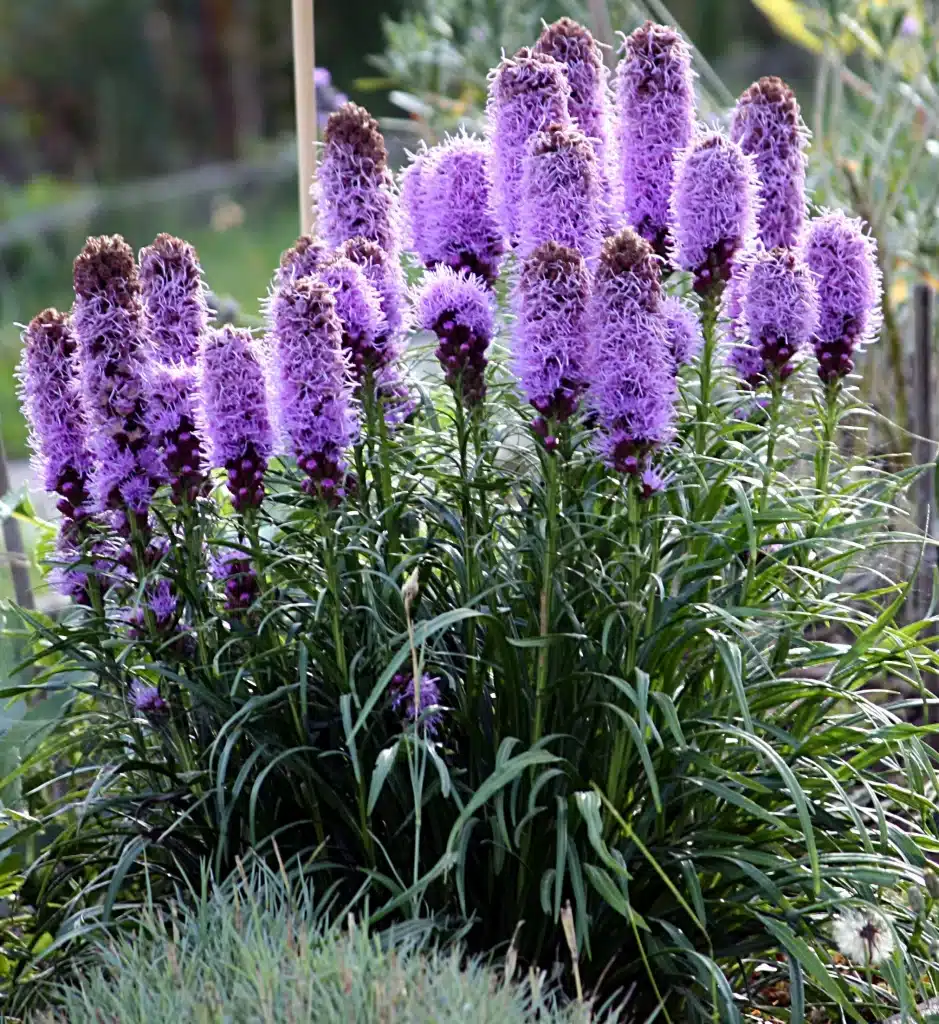
Blazing star plants need regular care to thrive. With proper watering, feeding, pruning, and support, these showy plants will put on a stunning display year after year.
Water your blazing stars deeply once a week. Give them about 1 inch of water each time.
These plants like moist soil but can’t stand wet feet. Check the soil before watering. If it’s still damp, wait another day or two.
Feed your plants in spring when new growth appears. Use a balanced, slow-release fertilizer.
Sprinkle it around the base of the plant and water it in well. You can also add bone meal to the soil.
This gives the plants extra phosphorus for strong roots and stems.
Don’t overfeed blazing stars. Too much fertilizer can lead to weak, floppy growth. Once in spring is usually enough.
Prune blazing stars in early spring before new growth starts. Cut back old stems to about 4-6 inches above the ground. This makes way for fresh growth.
Deadhead spent blooms throughout the growing season. Snip off faded flowers just below the bloom.
This keeps the plant looking tidy. It also encourages more flowers to form.
Leave some seed heads on the plant in fall. Birds love to eat the seeds. The dried stalks also add winter interest to your garden.
Tall varieties of blazing star often need support. Put stakes in place early in the season. This prevents damage to the roots later on.
Use bamboo stakes or thin metal rods. Place them about 6 inches from the plant’s base.
Tie the stems loosely to the stakes with soft twine. Don’t tie too tightly or you’ll hurt the plant.
For a more natural look, use branched twigs instead of stakes.
Push them into the ground around the plant. The stems will grow through the branches for support.
Blazing stars are hardy plants. They don’t need much special care for winter.
In fall, stop fertilizing your plants. This helps them prepare for dormancy.
After the first frost, cut back the stems to about 3 inches above the ground. Leave the roots and crown in place.
Add a 2-3 inch layer of mulch around the base of the plant. This protects the roots from freeze-thaw cycles.
In very cold areas, you can add an extra layer of protection. Cover the plant with a layer of straw or leaves. Remove this in early spring when new growth starts to appear.
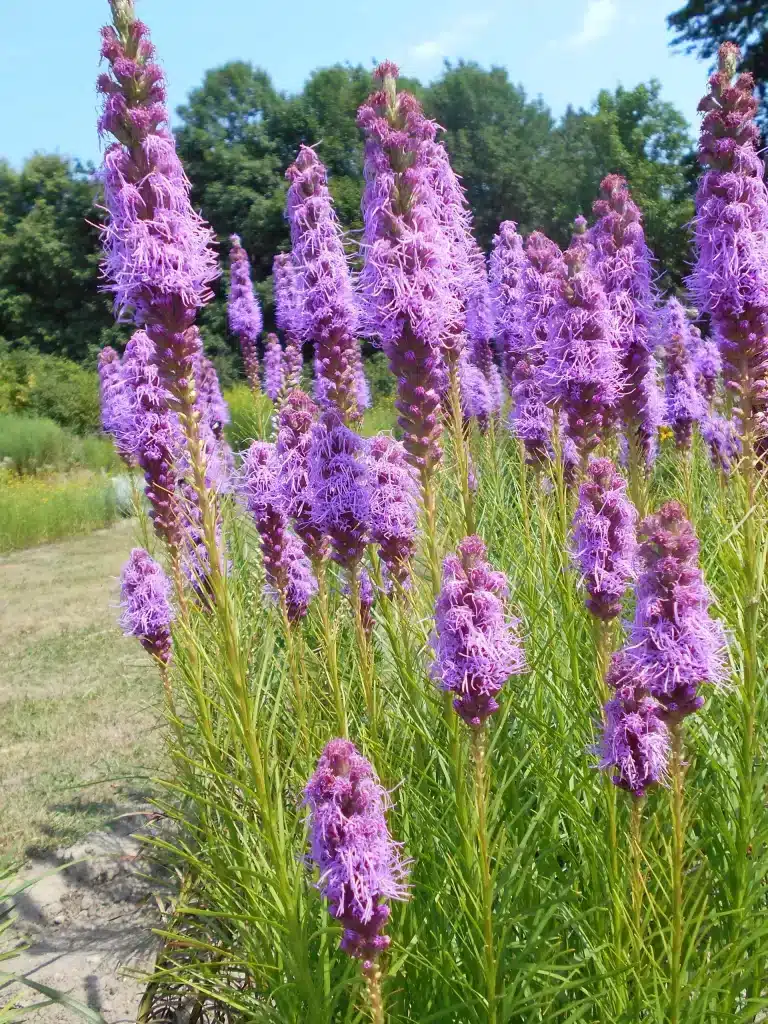
Growing blazing star plants can come with a few obstacles. Knowing how to handle pests, diseases, and environmental factors will help you keep your plants healthy and thriving.
Blazing stars often attract unwanted guests. Aphids can cluster on stems and leaves, sucking sap and weakening plants.
You can spray them off with water or use insecticidal soap.
Slugs and snails may chew on leaves, especially in damp conditions. Set up barriers or use bait traps to protect your plants.
Caterpillars sometimes feed on blazing star foliage. Hand-pick them or use a natural Bt spray if needed.
Spider mites can be a problem in dry weather. They cause yellowing leaves and fine webbing.
Increase humidity and spray leaves to deter them.
Fungal issues can affect blazing stars in wet conditions.
Powdery mildew appears as a white, powdery coating on leaves. It spreads quickly in humid weather.
Improve air flow and avoid overhead watering to prevent it.
Leaf spot causes dark spots on foliage. Remove infected leaves and avoid splashing water on plants.
Rust shows up as orange or brown spots on leaves. It thrives in moist conditions.
Space plants well and water at the base to reduce risks.
Verticillium wilt is a serious soil-borne fungus. It causes wilting and yellowing of leaves.
There’s no cure, so prevention is key. Plant in well-draining soil and avoid planting where the disease has occurred before.
Good air flow is crucial for blazing star health.
Poor circulation can lead to fungal problems and weak growth.
Space plants properly, allowing 12-18 inches between each one. This gives them room to grow and lets air move freely.
Prune dense growth to open up the plant’s center. This helps reduce humidity around leaves and stems.
In garden beds, avoid overcrowding with other plants.
Consider using raised beds or mounds to improve drainage and air flow.
In containers, choose pots with drainage holes. Use a well-draining potting mix.
Place pots where they get good air movement. Avoid cramped corners or areas with stagnant air.
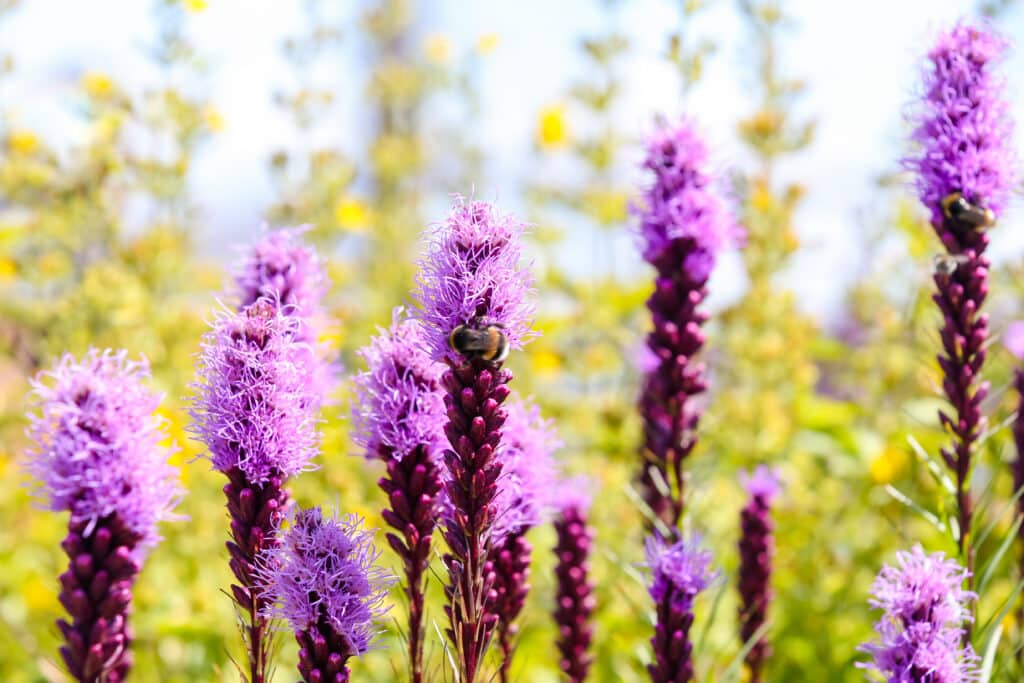
Blazing star plants play a vital role in supporting local ecosystems and wildlife. They offer numerous benefits to pollinators and contribute to the overall health of gardens and natural areas.
Blazing stars are a magnet for pollinators. Their tall spikes of vibrant flowers attract bees, butterflies, and hummingbirds.
These plants produce nectar-rich blooms that provide essential food for these creatures.
You’ll often see bees buzzing around the flowers, gathering pollen and nectar.
Butterflies like monarchs and swallowtails frequently visit blazing stars to feed.
Adding blazing stars to your garden can boost its appeal to pollinators.
Plant them in groups to create eye-catching patches of color.
Mix them with other native flowers that bloom at different times. This ensures a steady food supply for pollinators throughout the growing season.
You can pair blazing stars with coneflowers, black-eyed susans, and asters for a diverse pollinator haven.
Blazing stars support local wildlife beyond just pollinators. Their seeds provide food for birds in the fall and winter.
The plants also offer shelter and nesting sites for small animals.
In natural areas, blazing stars help prevent soil erosion with their deep root systems. They play a part in maintaining healthy prairies and meadows.
Some butterfly species rely on blazing stars as host plants. Female butterflies lay their eggs on the leaves.
When the caterpillars hatch, they feed on the plant.
Tiger swallowtails are known to use blazing stars as host plants.
By planting these flowers, you provide a nursery for future generations of butterflies. This makes blazing stars a key component of successful butterfly gardens.
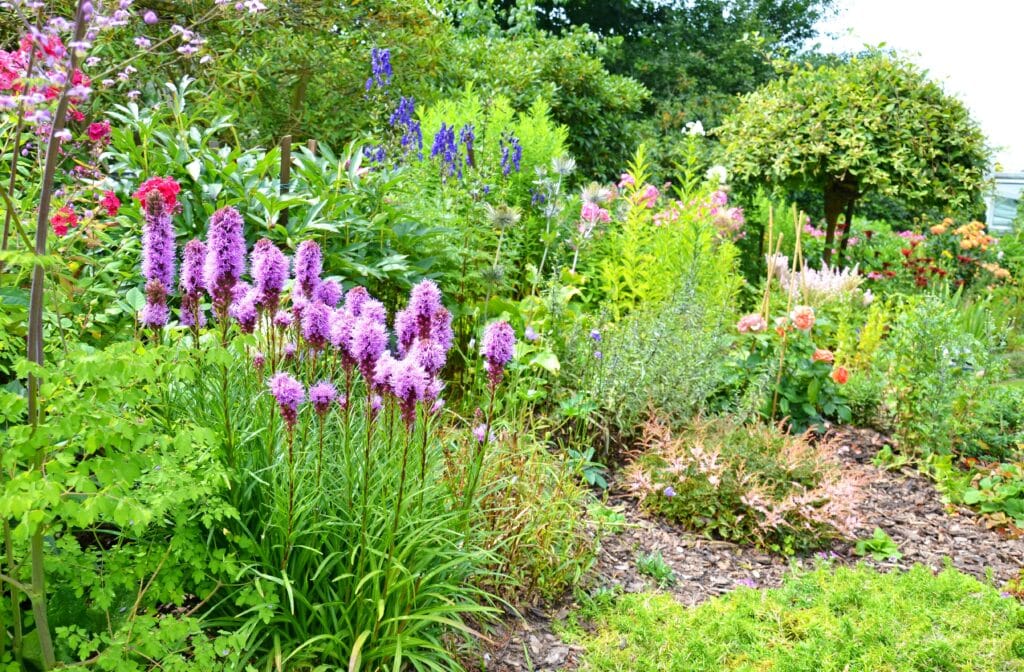
Blazing star plants add vibrant color and vertical interest to gardens. Their tall flower spikes create eye-catching focal points and blend well with many garden styles.
Blazing stars fit perfectly in cottage and ornamental gardens.
Plant them in groups of 3-5 for a natural look. Their purple, pink, or white flowers add pops of color among other perennials.
Try pairing them with shorter plants in front to hide their bare lower stems.
Good companions include coneflowers, black-eyed susans, and ornamental grasses. The spiky blooms contrast nicely with round flower shapes.
Choose companion plants that bloom at the same time as blazing stars. This creates a cohesive look in your garden.
Some great options are:
Pick plants with similar sun and water needs. This makes care easier for you.
Mass plantings of blazing stars make a big impact.
Plant them in drifts of 7 or more for a meadow-like feel.
Use them as a backdrop in perennial borders. Their tall spikes add height and drama.
In large spaces, create a sea of color with 50 or more plants. Mix different blazing star colors for variety.
Blazing stars are perfect for cutting gardens.
Their long stems hold up well in vases.
Cut them when one-third to one-half of the flowers are open. This gives you the longest vase life.
Plant extra blazing stars just for cutting so you don’t deplete your garden display.
Mix them with other summer blooms like zinnias and sunflowers for colorful bouquets.
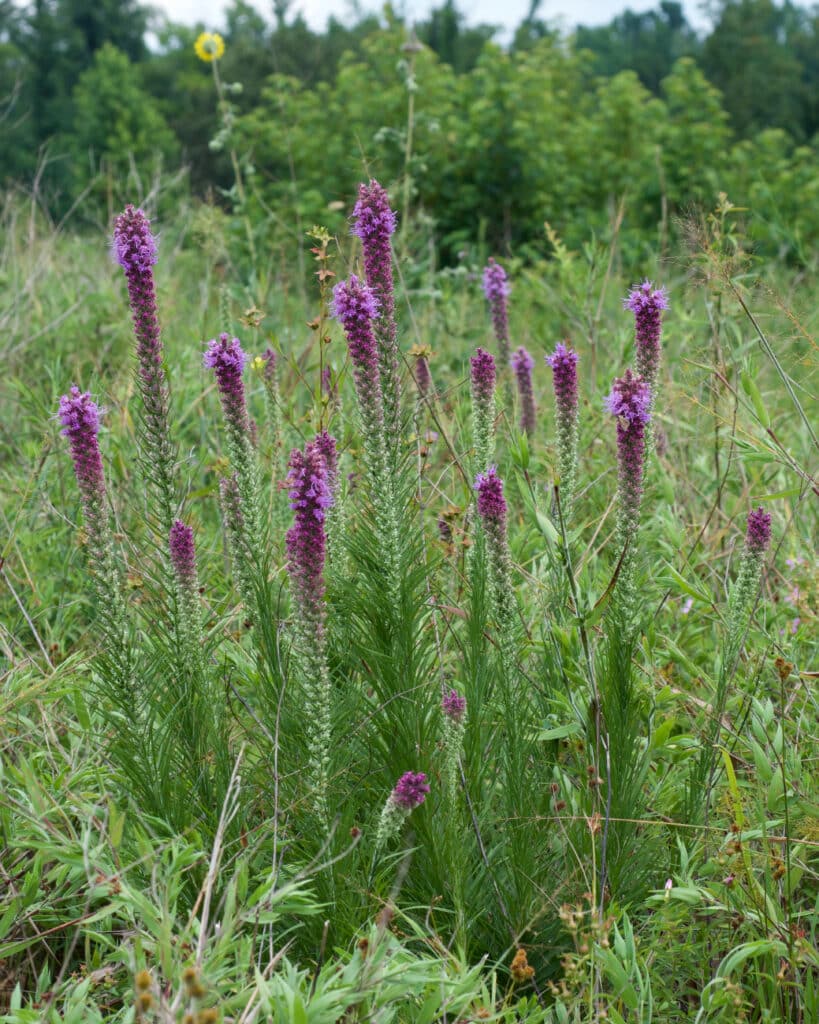
Blazing star plants offer unique traits that make them stand out in gardens. These prairie natives bloom for weeks, come in eye-catching colors, and attract wildlife while being easy to grow.
Blazing stars light up gardens from mid-summer to early fall. Most start blooming in July and continue into September.
The flowers open from the top down on tall spikes. This gives a long-lasting display that can stretch for 3-6 weeks.
Some varieties bloom earlier or later, letting you extend the show. Early bloomers start in June, while late types flower into October.
You’ll find blazing stars in shades of purple, pink, and white.
Purple is most common, ranging from light lavender to deep violet. Some have rosy-pink blooms. White varieties offer a crisp look.
The flower heads grow as fuzzy spikes up to 20 inches long. Each spike holds many small, star-shaped blossoms. These feathery flowers give the plant its “blazing” look.
Blazing stars are magnets for butterflies and bees. Their nectar-rich blooms draw these helpful pollinators all season.
Hummingbirds often visit too.
The tall flower spikes add vertical interest to borders and meadow plantings. They mix well with other prairie plants like coneflowers and black-eyed Susans.
Blazing stars also make great cut flowers for bouquets.
You’ll love how easy blazing stars are to grow.
They thrive in full sun and tolerate poor soil. Once set up, they need little care.
These tough plants resist drought and summer heat. They rarely need watering after the first year.
Blazing stars are native to the eastern United States. This makes them a perfect choice for sustainable gardens.
They support local ecosystems and don’t need much upkeep. You can leave the seed heads up in fall to feed birds.
Blazing star plants have a rich history and cultural importance. They play a key role in native ecosystems and gardens. These stunning flowers are also the focus of conservation efforts to protect prairie habitats.
Native American tribes used blazing star plants for various purposes.
The Omaha and Pawnee used the corms as food. They would roast or boil them like potatoes.
Some tribes made tea from the leaves to treat heart problems and fevers.
In folk medicine, blazing star was thought to help with kidney and bladder issues. The plant’s tall, showy flowers made it popular in Victorian-era gardens.
Today, it remains a beloved wildflower in many regions.
Blazing star also played a role in prairie ecology. Bison and other grazers ate the young shoots. This helped shape the plant communities of the Great Plains.
Blazing star stands out among prairie plants for its tall, vibrant flower spikes.
Unlike the flat-topped flowers of many prairie plants, blazing star has a distinctive vertical form.
It blooms later than some prairie flowers, adding color in late summer and fall. This makes it a valuable food source for migrating butterflies.
Blazing star is more drought-tolerant than many other prairie plants. It has a deep taproot that helps it survive dry spells.
This trait makes it a good choice for low-water gardens.
The plant also attracts a wide range of pollinators. Its nectar is especially popular with butterflies and native bees.
You can easily add blazing star to your native plant garden. It works well in both formal and informal designs.
The tall flower spikes add vertical interest to garden beds.
Blazing star pairs nicely with other prairie plants like coneflowers and black-eyed susans. It also looks great with ornamental grasses.
Plant blazing star in full sun for best flowering. It prefers well-drained soil but can adapt to various conditions.
Once established, it needs little care.
Blazing star is deer-resistant, making it a good choice for gardens in rural areas. It’s also salt-tolerant, so it can work in coastal gardens.
Many organizations work to protect blazing star and its prairie habitat. The plant is an important part of tallgrass prairie ecosystems.
These ecosystems have shrunk to less than 4% of their original range.
Conservation groups focus on preserving existing prairies. They also work to restore degraded areas.
This often involves planting native species like blazing star.
Some efforts aim to collect and preserve blazing star seeds. This helps maintain genetic diversity for future restoration projects.
You can help by planting blazing star in your own garden. This creates habitat for pollinators and helps preserve the species.
Supporting local prairie preserves is another way to aid conservation efforts.
Blazing star plants are beautiful and low-maintenance additions to many gardens. Here are some common questions about caring for and growing these lovely perennials.
Water blazing stars deeply once a week. They like moist soil but can’t tolerate wet feet.
Remove faded flowers to encourage more blooms. Cut back stems in late fall after the first frost.
Blazing stars attract butterflies and bees to your garden. They make great cut flowers that last a long time in vases.
These plants are also deer-resistant and drought-tolerant once established.
Blazing stars bloom from mid to late summer. Most varieties flower from July through September.
Some early bloomers start in June, while late varieties can bloom into October.
Black-eyed Susans complement blazing stars nicely.
Coneflowers and ornamental grasses also pair well. Try planting them with butterfly weed or joe-pye weed for a pollinator-friendly garden.
Sow blazing star seeds directly in the garden in fall or early spring. You can also start them indoors 6-8 weeks before the last frost.
To propagate from bulbs, divide mature plants in early spring or fall.
Blazing stars need full sun to thrive. They do best with at least 6 hours of direct sunlight daily.
In very hot climates, they can tolerate some afternoon shade.

Rose milkweed is a beautiful native plant that can add color and life to your garden. This perennial flower, also known as Asclepias incarnata, grows

Nodding onion plant is a charming native plant found across North America. Its drooping pink or white flower clusters add a whimsical touch to gardens

Lupinus perennis, known as wild lupine, is a stunning native wildflower of eastern North America. This perennial plant adds a splash of color to meadows

Pussy willows are a beloved sign of spring’s arrival. These fuzzy catkins appear on willow shrubs before their leaves emerge. Their soft, silvery buds resemble
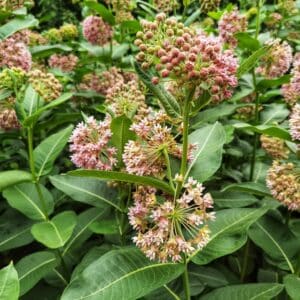

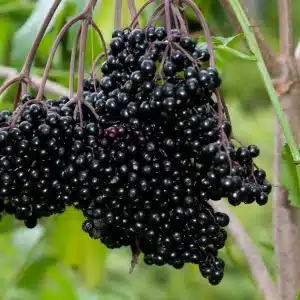
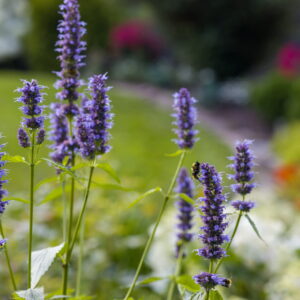
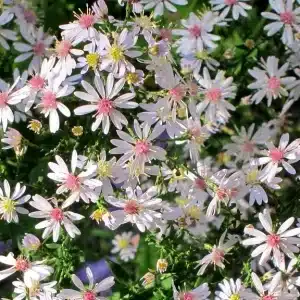
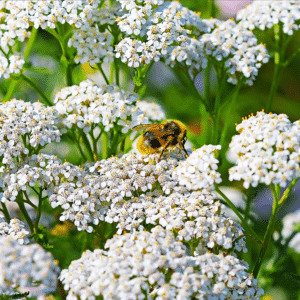
BUYING HIGH QUALITY PLANTS HAS NEVER BEEN EASIER
Our plants are easy to order, plant, and enjoy! Bringing pollinators to your property improves vegetable yields – Feed the bees!
Sign up for our email list!
Copyright © 2025 Bumbee’s | Web design and SEO by Searles Graphics